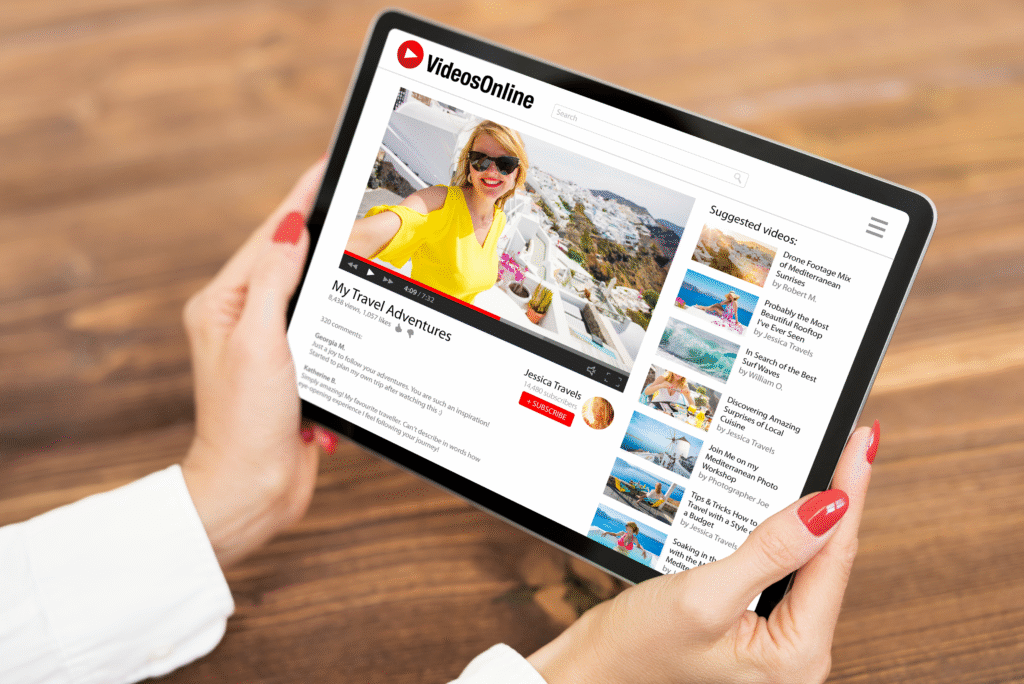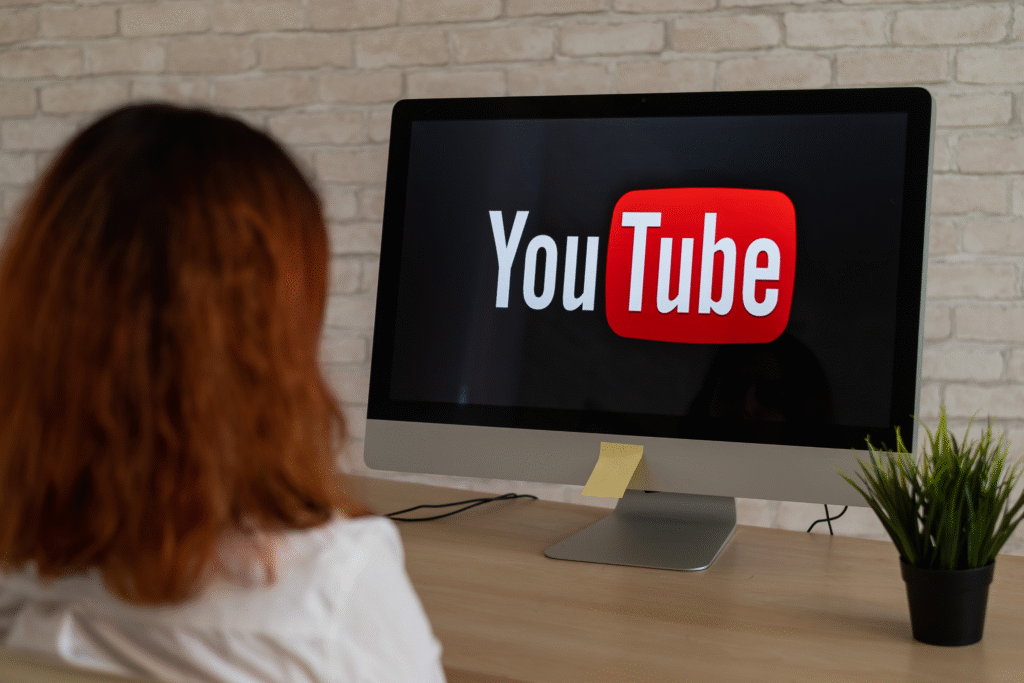If you’re ready to take your digital marketing strategy to the next level, video SEO could be the game-changer you’ve been searching for. With online video consumption growing exponentially, video has become a dominant force for engagement. However, creating great videos isn’t enough. Making your videos search-friendly is essential if you want them to reach the widest possible audience. Video SEO ensures your content ranks higher in search results, appears in suggested video lists, and grabs attention on both Google and platforms like YouTube. The result? A competitive edge in today’s crowded market.
To optimize your videos for search, incorporating professional video editing services can dramatically enhance the quality and impact of your content. Skilled video editing services help polish your footage by improving visual flow, adding engaging transitions, balancing audio, and integrating eye-catching graphics or subtitles. These enhancements not only make your videos more appealing but also increase watch time and viewer retention key factors that influence video SEO rankings.
What is Video SEO?
As an ecommerce agency, we’ve seen firsthand how video marketing can enhance SEO results. But what exactly is video SEO?
Simply put, video SEO is the process of optimising your video content so it ranks higher and gains more visibility on search engines. Much like traditional SEO for webpages, the goal is to help search engines understand your video so it can rank well in both video search results and standard search listings. When search engines can accurately interpret your video content thanks to metadata, transcripts, descriptions, and technical optimization your chances of reaching your ideal audience increase dramatically.
How is Video SEO Different from Traditional SEO?
While traditional SEO and video SEO share the same end goal (better visibility and higher rankings), the way you achieve them differs. In both cases, the aim is to make your content more appealing and understandable to search engines so it appears higher in search results. However, the methods you use depend on the format of your content and videos require a slightly different approach compared to written text.
With traditional SEO, you focus on optimising text-based content like blogs, product descriptions, and landing pages. Keywords, headings, and backlinks play a major role. This means carefully choosing the right words people are searching for, structuring your content with clear headings, and earning links from other trusted websites. These elements signal to search engines that your page is relevant and trustworthy, which can help it rank higher.
With video SEO, the strategy expands to include:
- Video transcripts for search engine readability. These allow search engines to “read” the spoken content in your video, making it easier to match with relevant search queries.
- Thumbnails that grab attention and improve click-through rates. A strong thumbnail can make the difference between someone watching your video or scrolling past it.
- Descriptions and metadata specifically tailored to video platforms. These give both viewers and search engines a clear idea of what your video covers, increasing the chances of it showing up for the right searches.
- Technical optimisation like encoding, schema markup, and mobile responsiveness. These steps ensure your video plays smoothly, loads quickly, and is formatted in a way search engines can easily process.
Essentially, traditional SEO tells Google what your page is about, while video SEO makes sure your videos speak the search engine’s language. By combining these video-specific elements with solid overall SEO practices, you can make your video content far more discoverable and appealing to your target audience.

Why Video SEO Matters More Than Ever
More and more people watch videos online every day. With apps like YouTube, TikTok, and Instagram Reels becoming very popular, videos have become one of the main ways people learn and have fun. Experts say that by the end of this decade, videos will make up over 82% of all internet traffic. This shows just how important video content is now.
Search Engines Love Videos
Google and other search engines like to show videos in their results. When people search for things like “how to fix a bike” or “easy cooking tips,” videos often appear right at the top. This means having videos can help your website or business get noticed more easily by people looking for answers.
Users Engage More with Video
Many people prefer watching a short video instead of reading a long article. Videos can explain ideas faster and keep viewers interested. Because of this, videos get more attention and shares on social media, which helps spread your message farther and brings more visitors to your website.
Video Boosts Dwell Time
When visitors watch a video on your website, they usually stay longer on the page. This is called “dwell time.” Search engines notice when people spend more time on a site, and they see it as a sign that the content is helpful. Longer visits can improve your site’s ranking in search results.
Brand Trust and Recall
Videos help build trust with customers. When you create videos that look professional and have your brand’s colors and logo, people remember your company better. High-quality videos show that you care about what you offer, which makes people more likely to choose your products or services over others.
Video SEO Boosts Business Growth
For businesses, especially those offering expert services like SEO in Liverpool, adding videos to their websites can make a big difference. Videos combined with good SEO help more people find the company online. This means more visitors, more customers, and better sales. Video SEO is a smart way to grow your business today.
How to Make Video SEO Work for You
Start by creating videos that answer common questions your customers have. Then, use video SEO techniques like adding clear titles, descriptions, and transcripts. Don’t forget to make an eye-catching thumbnail. These steps help search engines understand your videos and show them to the right people.
The Future of Video on the Internet
Since videos will soon be the biggest part of internet content, it’s a good idea to get ready now. Using video SEO will help your business keep up with this trend and stay ahead of competitors. The more people who find and watch your videos, the better your chance to succeed online.
Video SEO and Social Media Marketing
Video SEO and social media marketing work together like a team. When you make videos that are easy to find in search, you also want to share them on places like Facebook, Instagram, TikTok, and LinkedIn. Sharing videos on social media brings more viewers who might not find your videos by searching. When lots of people like, comment, or share your video on social media, search engines see that your video is popular and rank it higher. Use hashtags and clear descriptions on social media so people can find your videos more easily. Share playlists, live videos, or new uploads to keep your followers interested. Social media apps have their own search, so making your videos easy to find there is important too. Using clear titles and captions helps your videos show up in these searches. When video SEO and social media work together, your videos get seen by more people and shared more often. This brings more viewers to your channel and website, helping your business grow. For your marketing agency, combining video SEO with social media marketing shows clients you know how to get the best results and grow their audience faster.
Key Components of Video SEO
Making sure your videos get found and watched means paying attention to a few important parts of video SEO. These parts help search engines and viewers understand what your video is about and why they should watch it. Let’s look at the key components that make video SEO work well.
Title Optimisation
The title of your video is like a headline in a newspaper. It needs to catch people’s attention quickly. Use clear and simple titles that include your main keyword. For example, “Video SEO: What You Need to Know.” Keep it short, under 60 characters, so it doesn’t get cut off in search results. Avoid fake promises or clickbait titles.
Description Optimisation
The video description tells both viewers and search engines what the video is about. Write a short summary between 150 and 300 words that explains your content clearly. Use your main keyword naturally and include related words. Adding timestamps helps viewers jump to parts they want to see. Also, include links to helpful pages or your website.
Tags and Metadata
Tags are like labels for your video. They help put your video in the right group so people can find it in suggested videos. Use some broad tags like “video SEO” and some more specific ones like “how to optimize videos for Google search.” Don’t use too many tags; it’s better to have a few good ones than a long list.
Video Transcript
A transcript is a written copy of all the words spoken in your video. This helps people who cannot hear well and makes it easier for search engines to understand your video. Transcripts can also be turned into blog posts or social media updates. Including a transcript makes your video content useful in many ways.

Optimising the Video Content Itself
Creating High-Quality, Engaging Videos
A video should solve a problem or answer a question your audience has. The first 5 to 10 seconds must grab attention so viewers don’t click away. Make sure the audio is clear and the video looks sharp. Use a friendly and professional style so viewers trust your message and want to keep watching.
Incorporating Keywords Naturally
Just like writing a blog, your video works better when you use keywords naturally. Mention your main keywords in what you say during the video. You can also add keywords in text that appears on screen or in captions. For example, if your video is about “What is Video SEO?”, say that phrase clearly in your introduction and explanation.
Using Compelling Thumbnails
The thumbnail is the small picture people see before clicking on your video. It’s the first thing viewers notice, so make it count. Use a clear and bright image that focuses on the main idea. Add short, bold words on the thumbnail to give a quick hint about the video topic. Keep your brand’s look the same on all thumbnails.
Technical Optimisation for Video SEO
Video Format and Encoding
Choosing the right video format is important so your videos work on all devices and websites. MP4 is the best choice because almost every browser and device can play it. Also, your video should be compressed. This means making the file smaller so it loads quickly but still looks good. The H.264 codec is a popular way to compress videos. It keeps good picture quality while making the file size smaller, helping your video play smoothly on the web.
Video Schema Markup
Schema markup is a special code you add to your website to help search engines understand your video better. It tells them important details like how long the video is, when it was uploaded, what it’s about, and the thumbnail picture. This information helps search engines show your video in special spots called rich snippets. These rich snippets stand out in search results and can get more people to click on your video.
Mobile Optimisation
Most people watch videos on their phones now over 70% of YouTube watch time comes from mobile devices. Because of this, your videos need to work well on small screens. Make sure your website design adjusts to fit phones and tablets. Videos should load fast so viewers don’t get frustrated waiting. The play button should be easy to tap with a finger, not too small or too close to other buttons. When videos work well on mobile, people are more likely to watch and share them.
Integrating Video SEO with Overall Content Marketing
Videos are a great way to share your message, but they work best when used with other types of content. Combining video SEO with your overall content helps more people find you and keeps them interested. Think of videos as part of the bigger story you tell about your business. For example, if you write a blog about a topic, create a video that explains the same idea in a simple way. Some people like to read, others like to watch. Offering both reaches a wider group of people. Make sure your videos use the same keywords and talk about the same topics as your other content. This helps search engines understand your website better. When videos and blog posts match, search engines see your site as more reliable, which helps it rank higher.
Adding videos to your web pages makes them more engaging. Visitors stay longer watching videos, and search engines notice this. For example, a short video on a product page can explain things faster than text and help visitors decide to buy. Share your videos in emails and on social media too. Linking videos there brings more viewers. More views and shares improve your video SEO. You can also turn video transcripts into blog posts or make short clips for social media. One video can create many types of content. When video SEO fits with your content marketing, your audience finds you in different ways, trusts you more, and your business grows.
Best Practices for Long-Term Video SEO Success
Consistent Branding Across Videos
Your videos should look like they come from the same company or person. Use the same style at the beginning and end of each video, like a logo or a special tune. Keep colours, fonts, and logos the same so people recognize your brand easily. When your videos all feel connected, it builds trust and helps viewers remember you. Consistent messaging also makes your brand stronger and more professional.
Regularly Updating Older Videos
Videos you made a long time ago can still help your business if you keep them fresh. Go back to your old videos and update their titles and descriptions with new keywords people are searching for now. Add links to new pages or call-to-action buttons so viewers know what to do next. If some parts of the video have old information, consider replacing them or adding notes to keep everything current. Updating older videos keeps them useful and helps them rank better.
Testing Different Strategies
Not every video needs to be the same length or style. Try making some short videos that are quick and to the point. Then, test longer videos that tell a story or explain things in detail. See which ones your viewers like best. Also, share your videos in different places like YouTube, Vimeo, TikTok, or your website. Testing different approaches helps you learn what works best for your audience and improves your video SEO over time.
Local Video SEO Strategies
Local video SEO helps your videos reach people near your business. This is great if you want more customers from your town or city. Use local words in your video titles and descriptions. For example, “best pizza in Manchester” if you have a pizza shop there. This helps people nearby find your videos. Add your location in the video details so search engines know where your business is. Say your city name in the video too, so viewers hear it. Make videos about local events or customer stories. This helps people nearby connect with your business. Keep your business address and phone number the same on your website and video pages. Link your videos to your Google My Business page to get more local views. Ask happy customers to share your videos or leave reviews. This builds trust and helps your videos rank higher for local searches. These easy steps help your videos find local viewers and grow your business in your area.
How to Measure Video SEO Success
Measuring how well your videos perform online is important. It helps you know if your efforts are working and where you can improve. Focus on a few key numbers that show how people find and interact with your videos.
Views
Views count how many times your video has been watched. More views mean more people are seeing your message. But just having many views doesn’t always mean people liked your video or found it helpful. Some might watch only a few seconds and leave.
Watch Time
Watch time tells you how long people stay watching your video. If viewers watch most or all of your video, it means they like it and find it useful. Videos that keep people watching longer tend to get better rankings on search engines because they show your video is valuable.
Engagement
Engagement means how people interact with your video. This includes likes, comments, and shares. When viewers take time to comment or share your video with friends, it shows they enjoyed it. High engagement helps your video get noticed by search engines and reach more viewers.
Click-Through Rate (CTR)
CTR measures how many people click on your video after seeing it in search results or suggested video lists. A high CTR means your video title and thumbnail are interesting and make people want to watch. Improving your title and thumbnail can help get more clicks.
Conversion Rate
Conversion rate shows how many viewers take action after watching your video. This could be visiting your website, signing up for a newsletter, or buying a product. If your videos lead to more actions, they are helping your business grow. Tracking conversions tells you if your videos are effective.
Using Analytics
Use tools like YouTube Analytics or Google Analytics to track these numbers easily. These tools show detailed reports on views, watch time, engagement, CTR, and conversions. Look at your data regularly. If watch time is low, try to make your videos more exciting at the start. If CTR is low, improve your thumbnails and titles. Keeping an eye on these stats helps you make better videos over time and get more viewers.
Advanced Video SEO Tips for Competitive Niches
Create Playlists to Keep Viewers Watching
Playlists let you put videos together so they play one after another. When someone watches one video, the next one starts automatically. This makes people watch more videos in a row. The longer they watch, the better your videos show up in search results. Playlists help keep people interested and watching.
Use End Screens and Cards
End screens and cards are small buttons that pop up during or at the end of your video. They help guide viewers to other videos or to your website. This way, viewers can easily find more videos from you or learn more about what you offer. Using these keeps people watching more and helps grow your audience.
Promote Videos Off-Platform
Sharing your videos outside of YouTube is very helpful. You can put videos on your blog, in emails, or on social media like Facebook and Instagram. This way, people who don’t visit YouTube often can still find your videos. Sharing videos in many places brings new viewers to your channel and website.
Look at Watch Time in Analytics
Watch time tells you how long people watch your videos. If many people stop watching early or leave at the same part, something might need fixing. Maybe the video is too long or not interesting at the start. Fixing these problems helps keep viewers watching longer and makes your videos rank higher.
Frequently Asked Questions
Q1: Does Video SEO help website rankings?
Yes. Optimised videos can improve dwell time, engagement, and backlink potential all of which can positively impact overall SEO.
Q2: How long should my video be for SEO?
There’s no fixed rule, but aim for 2–5 minutes for quick topics and up to 10–15 minutes for in-depth guides.
Q3: Do I need professional equipment for video SEO success?
Not necessarily. Good lighting, clear audio, and steady footage matter more than expensive gear.
Q4: Is YouTube the only platform I should focus on?
No. Consider Vimeo, TikTok, Instagram, and embedding videos on your own website for maximum reach.
Q5: Should I add captions to my videos?
Absolutely. Captions improve accessibility and give search engines more text to index.
Q6: How often should I upload videos for SEO benefits?
Consistency matters more than frequency. Upload on a predictable schedule weekly, biweekly, or monthly.
Q7: Can video SEO help local businesses?
Yes. Using local keywords and adding location details in your videos can attract nearby customers and improve local search rankings.
Q8: How important are thumbnails for video SEO?
Thumbnails are very important. A clear, eye-catching thumbnail can increase clicks and help your video stand out in search results.
Q9: Should I use transcripts for all my videos?
Yes. Transcripts make your videos accessible to more people and help search engines understand your video content better.
Q10: Can I use old videos for SEO?
Definitely. Updating titles, descriptions, and tags on older videos can improve their rankings and bring in new viewers.
Final Thoughts
Investing in video SEO isn’t just a marketing trend, it’s a necessity for brands that want to stand out in search results and reach wider audiences. By optimising titles, descriptions, transcripts, and technical elements, you give your content the best possible chance of success.
If you’re ready to optimize your videos for higher rankings and stronger engagement, start applying these strategies today and watch your visibility grow.





